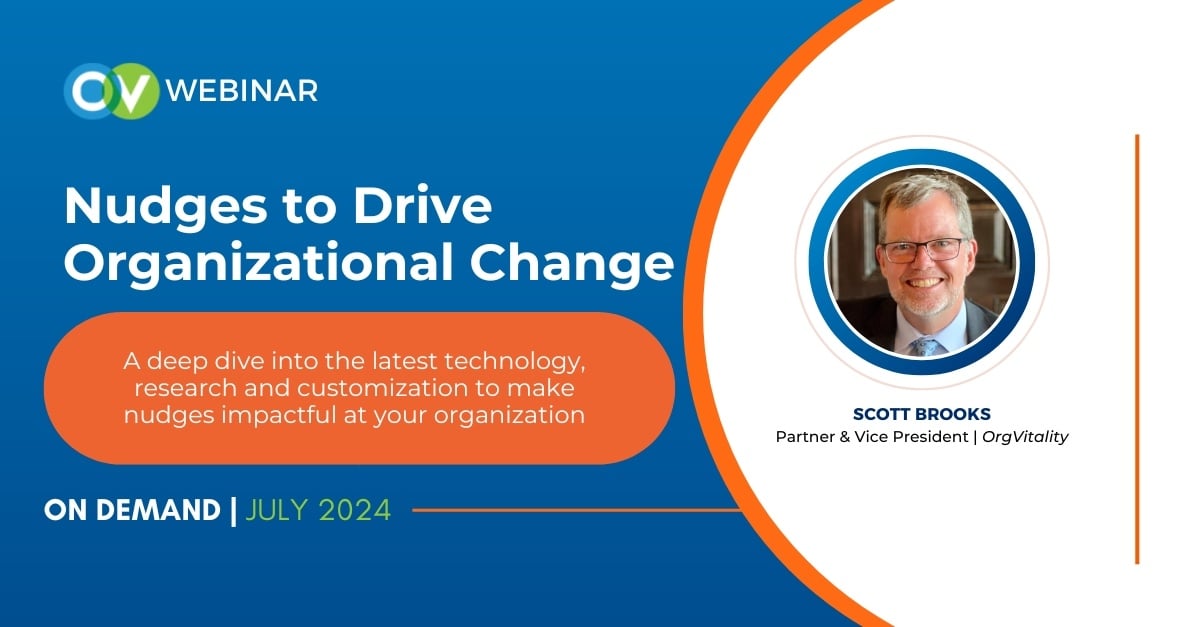
Nudges are everywhere. Whether you’re traveling through the airport, scrolling through social media, or running routine errands, chances are you’re being nudged throughout your typical day. But promises of nudges are even more ubiquitous – even though most don’t fit the definition. Every day there are new apps that promise unobtrusive, science-based nudges, but most are simply notifications. Well-timed calendar reminders or pop-up notifications can be useful to manage a chaotic, overly booked schedule, but they do not fit the definition of a nudge, or come with the behavior change associated with nudges. My current favorite example? An app that promises nudges, and provides a weekly digest of local outdoor activities. The list of current events is nice, but it’s not targeted based on my goals or current behaviors, and doesn’t do anything to help me make a positive behavior change.
[Related Webinar: Optimizing Your Survey Nudging For Survey Action]
The sweeping promise of behavior change from highly generalized ‘nudges’ applies to the employee survey world as well. Many offerings promise to drive meaningful improvements in organizations through nudges attached to highly generalized surveys. When ‘nudges’ are reminder-based, and driven by content that isn’t specific to an organization’s goals, they aren’t nudges at all. A nudge, conceptualized by the field of behavioral economics, is a targeted intervention that helps individuals define choices and make processes easier. A nudge should help an individual, the nudg-ee, live up to their own goals for positive behavior change. There are multiple types of nudges:
- Social Norms/Pressure: Aligning with how people want others to see them
- Context: Illustrate the implications of actions
- Change defaults: Reduce an individual’s mental load
- Reinforce commitments: Focus on the future
Nudges help individuals live up to their own good intentions by making the ‘positive’ choice more obvious, and easier to commit to. So, a nudge is often not for experts who think deeply about these choices day to day. Nudges are most helpful when:
- Tasks are difficult or unfamiliar
- When someone is unsure of how they will act
- When they are used with regularity
- When they align with motives
Nudges are absolutely applicable to survey work – they can help us collect more actionable data, and make the action planning process more straightforward for managers. However, this must be designed in a way that is customized to the specific goals and content for each organization, and implemented in a way that’s aligned with the culture and rhythms employees in each organization are accustomed to.
Author

Amanda focuses on business development, including creating branded content, managing special events, and working with clients to enhance their internal communications. Amanda comes to OrgVitality from the media industry, where she had 20 years of experience writing for national magazines, newspapers, online publications, and television news programs. She graduated from Columbia University with a B.A. in English and Comparative Literature






